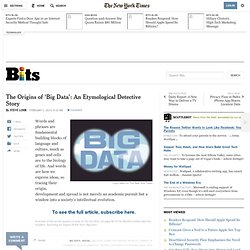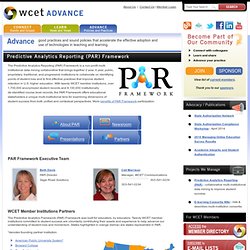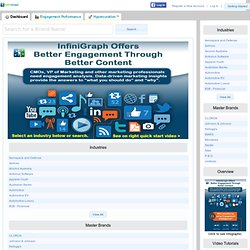

Larry Smarr. The Origins of 'Big Data': An Etymological Detective Story. Lloyd Miller for The New York Times Words and phrases are fundamental building blocks of language and culture, much as genes and cells are to the biology of life.

And words are how we express ideas, so tracing their origin, development and spread is not merely an academic pursuit but a window into a society’s intellectual evolution. Digital technology is changing both how words and ideas are created and proliferate, and how they are studied. Just last month, for example, the Library of Congress said its archive of public Twitter messages has reached 170 billion tweets and rising, by about 500 million tweets a day. The Library of Congress archive, resulting from a deal struck with Twitter in 2010, is not yet open to researchers. The new digital forms of communication — Web sites, blog posts, tweets — are often very different from the traditional sources for the study of words, like books, news articles and academic journals. But Mr. Francis X.
Mr. I replied to Mr. Prescient indeed. The Human Face of Big Data. Putting big data and advanced analytics to work. Predictive Analytics Reporting (PAR) Framework. Good practices and sound policies that accelerate the effective adoption and use of technologies in teaching and learning.

The Predictive Analytics Reporting (PAR) Framework is a non-profit multi-institutional data mining collaborative that brings together 2 year, 4 year, public, proprietary, traditional, and progressive institutions to collaborate on identifying points of student loss and to find effective practices that improve student retention in U.S. higher education. With twenty WCET member institutions, over 1,700,000 anonymized student records and 8,100,000 institutionally de-identified course level records, the PAR Framework offers educational stakeholders a unique multi-institutional lens for examining dimensions of student success from both unified and contextual perspectives.
More benefits of PAR Framework participation. PAR Framework Executive Team Cali MorrisonManager, WCET Communications303-541-0234303-541-0234 WCET Member Institutions Partners. The Ultimate Source in #ContentMarketing Intelligence. Content Optimizer - How To All content that trends on a brand is ranked and filtered for Saturday and Sunday postings based on a 7 day rolling average.

Only the best content with the highest engagement will show up in your Content Optimizer tab. Select the number of optimized posts you want to send to each or your social channels. You can post more on Twitter than Facebook just be careful not to over post. i.e. 5 on Twitter and 3 on Facebook. NOTE: your defaults are set under the My Accounts tab. Email notifications are sent to your preferred email on Wednesday and Friday end of day. Search Engine Optimization Industry Page - Engagement Intelligence - Content Trend - Competitive Analysis.
Charter School Network Offers Its Own Data System to All Schools. Digital Tools By Lillian Mongeau As gathering data about student performance becomes a bigger priority in education, schools are faced with different choices on how to capture that data.

A slew of tech companies offer a variety of products they’ve developed for schools, but some school districts are creating their own data systems. California-based charter network Aspire Public Schools is one of them. The school created a data system called Schoolzilla, a web-based data platform that is now available to any school who wants to use it for free.
The data tool, originally developed three years ago, allows teachers to synthesize data from multiple sources and create reports. “Teachers spent hours pulling data out of the attendance system, then the gradebook, then the tests, then matching it all together.” But academic performance numbers aren’t the only data captured. “Having all those reports at their fingertips gives [teachers] more time to plan and teach,” Utgoff added. Related. Where Instructional Design Meets Big Data by Reuben Tozman. “We didn’t cause the business to achieve its objectives, but our data supports the system for helping the business achieve its objectives.

You can do this by designing your interventions to work within the system (I’m not talking LMS or any technology for that matter) and generating data that’s important for the business.” The business environment, learner profiles, training environment, and IT infrastructure are all things that instructional designers consider in their design plans. For many in the instructional design space, the term big data is something that is probably neither interesting nor relevant to the craft of design. In the coursework leading to a master’s in educational technology, any discussion about using data to inform the design process is generally tied to creating courses that improve test scores. There is nothing about designing experiences to generate a certain and specific type of data. Where does big data fit in?